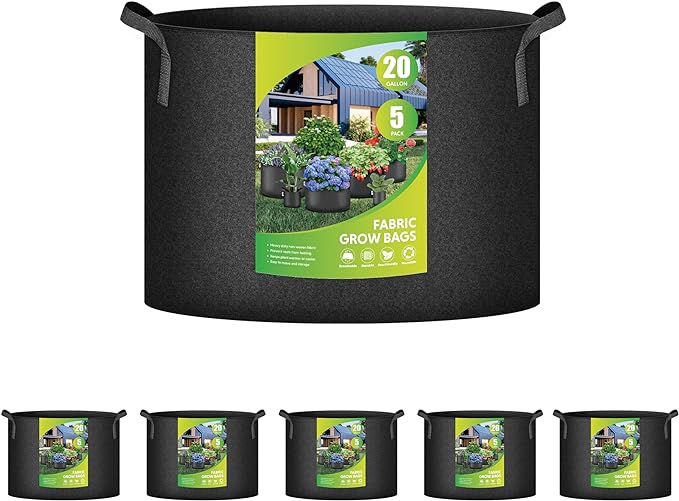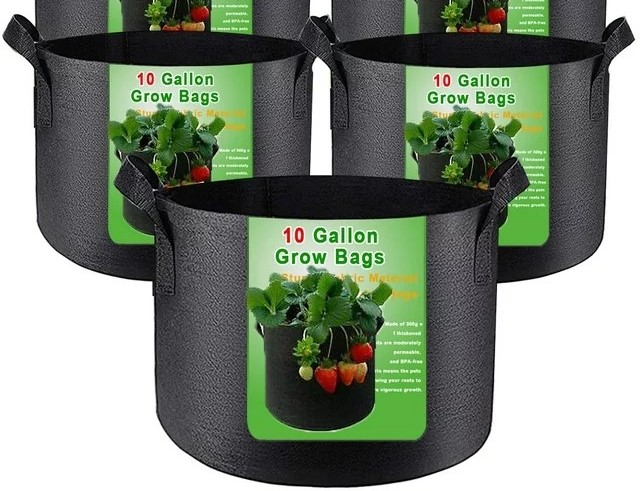Gardening with grow bags – use this simple, space-spacing method to grow your own fruit and veg
Grow bags are a flexible and adaptable growing method, and are ideal for small backyards
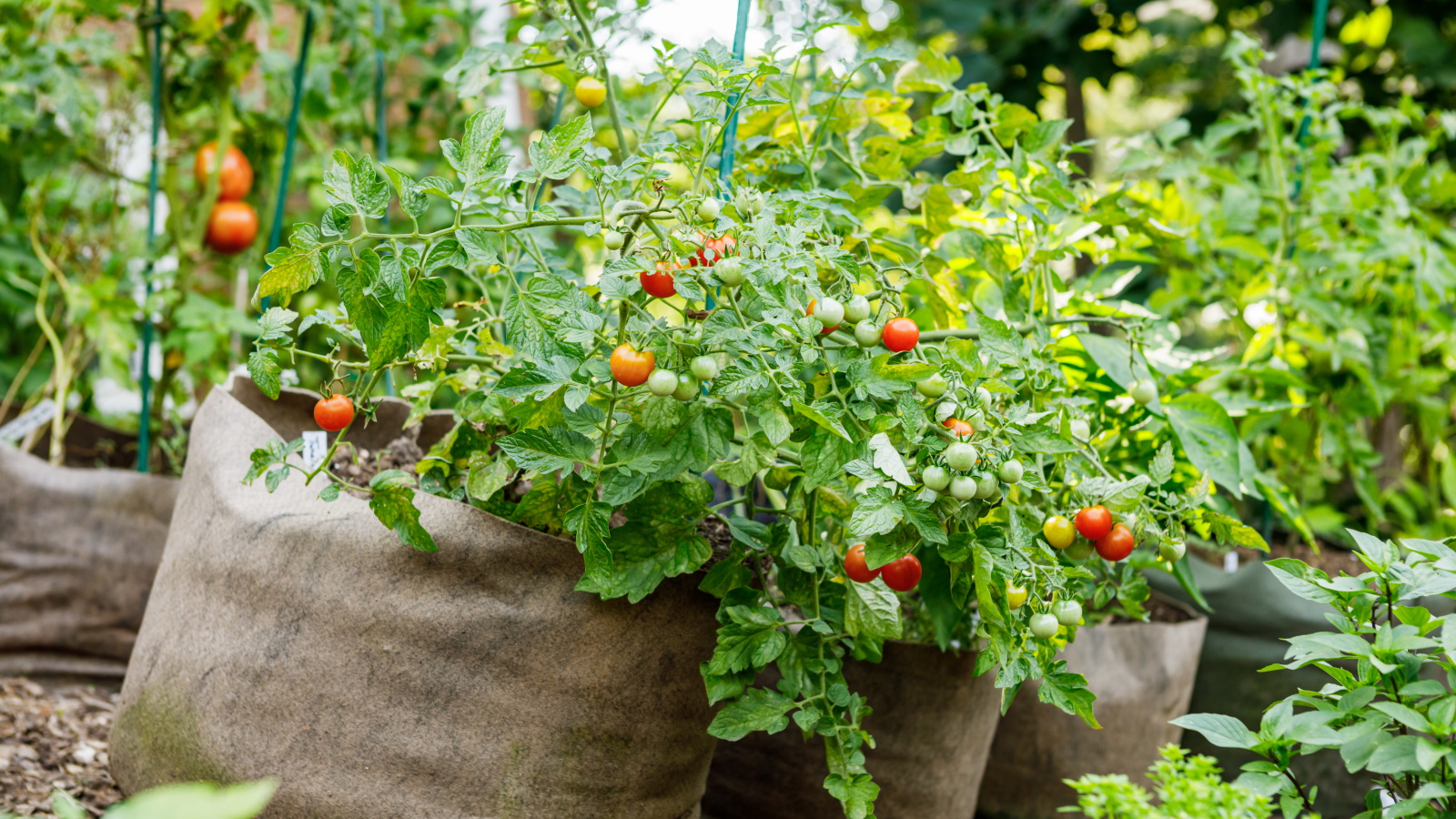

Grow bags are a functional option for urban gardeners seeking vegetable garden ideas but do not have a large backyard. These innovative containers are space-saving and cost-effective, and crops such as potatoes, tomatoes and cucumbers will produce excellent harvests when grown this way.
Put simply, grow bags are portable containers made from lightweight fabrics that are often permeable, with several advantages over traditional pots. One of the main advantages is portability, as they are light enough to transport to another spot in the backyard or another property. Grow bags are also a sustainable option as they can be reused year after year.
So, if you are looking for small vegetable garden ideas, using grow bags to cultivate some of the easiest vegetables to grow might be the best option for you. For prospective gardeners wanting to grow on a balcony or residing in a rental unit, why not give this easy option a try? Here, we share advice on how to use grow bags in your yard this year.
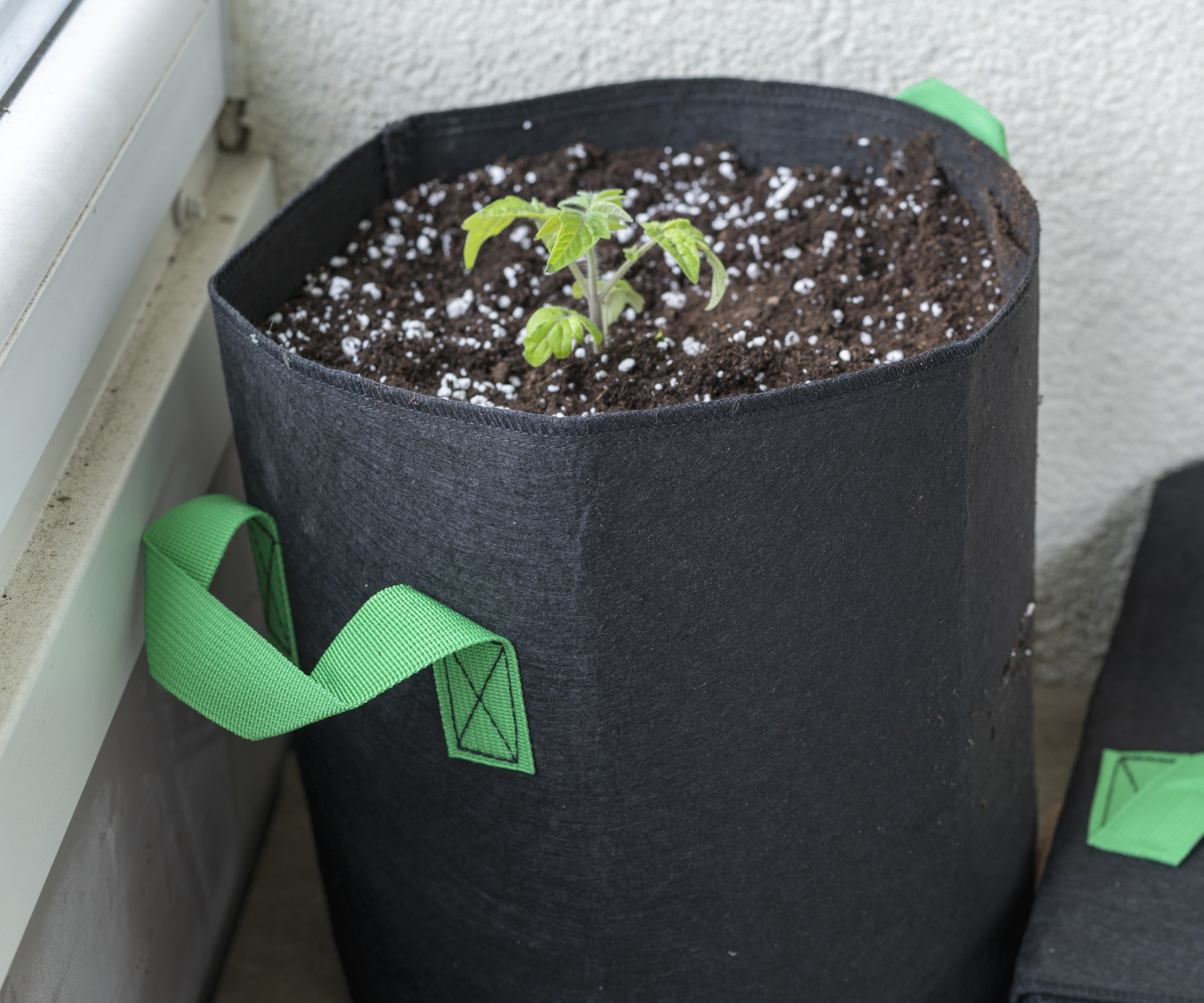
How to use grow bags
Grow bags are a space-saving and flexible growing method for those gardeners looking to grow fruit and veg but lack the space to do so. These portable containers can be used to grow a range of fast-growing vegetables, including potatoes, tomatoes, capsicum and chilies.
Crops to cultivate using grow bags
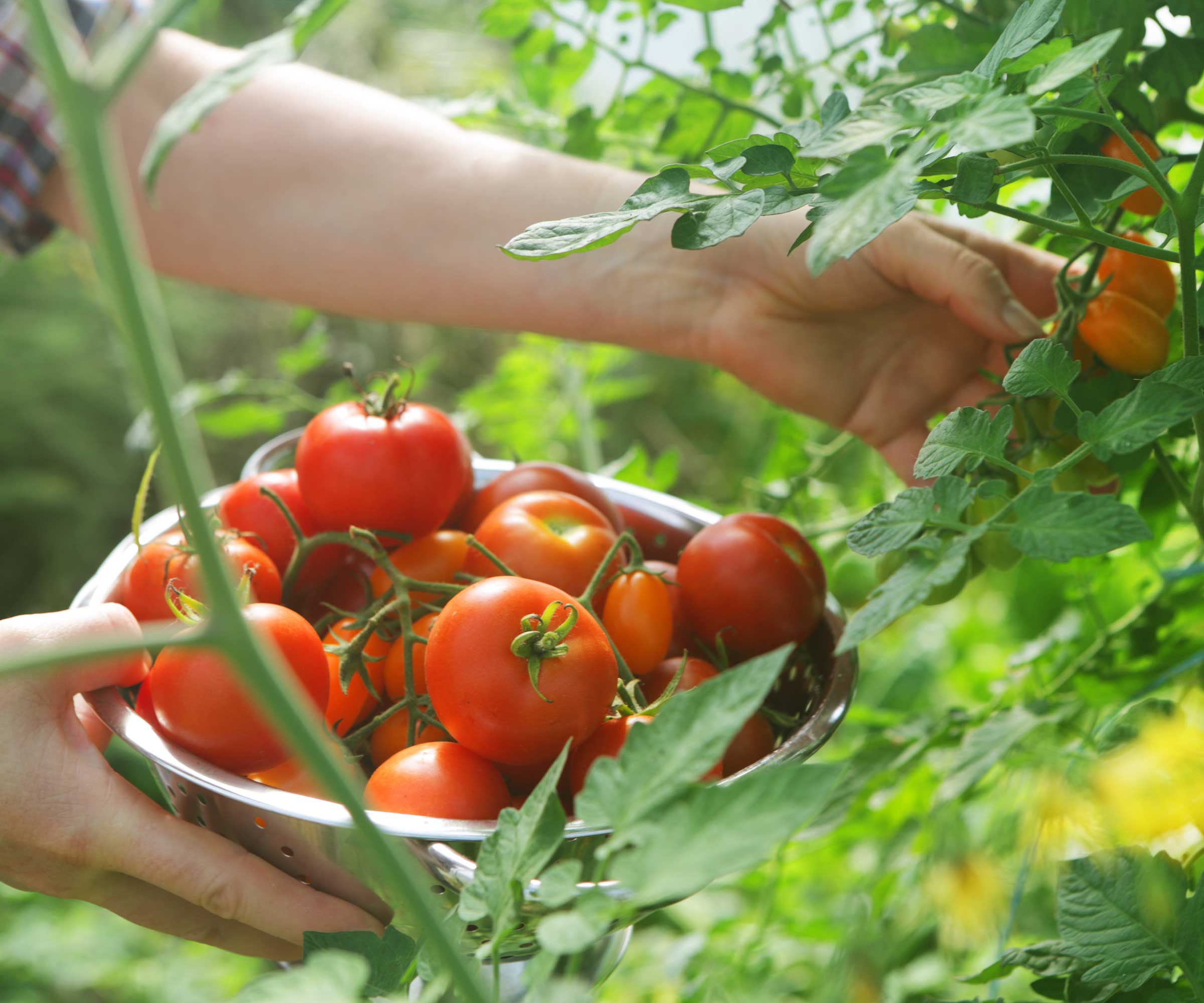
'Grow bags are wonderful for many reasons. They are inexpensive, lightweight and convenient,' says Jen McDonald, garden expert and co-founder of Garden Girls.
'They are perfect for growing vegetables and fruits like tomatoes, eggplants, peppers and okra,' Jen adds, making them a handy option for gardeners looking to grow crops in small backyards. For those considering growing tomatoes, this year, using grow bags is a viable option, and tomato seeds, such as this sungold variety, are available from Burpee.
In addition, if you are looking for something sweeter, consider how to grow strawberries in pots and grow bags this year, for a bumper harvest of delicious red fruits. Strawberry plants can be purchased online at Burpee, ready to be planted into your grow bag.
Many salads and herbs can also be suitable for cultivating in grow bags. Learning how to grow lettuce in pots by following our guide is recommended, as the principles for growing delicious leaves remain the same.
Perhaps one of the most popular crops grown this way is potatoes and, fortunately, for gardeners asking how to grow potatoes in a bag, this approach is a foolproof way to harvest a bounty of potatoes this summer. The mounding process remains the same, but the trick is to roll down the sides of the grow bag and roll up as you add compost through the season. Following this tried and tested technique, even in a grow bag, will produce delicious potatoes for your summer suppers.
Finally, in addition to fruit and vegetables, Jen recommends 'using bags for growing dahlias, which ensures that each plant can grow in an isolated environment so that if tubers are affected by gall, it doesn’t contaminate the rest of the bunch.' If you are thinking about when to plant dahlias in a grow bag, the process is much the same as the usual approach, and planting in the springtime will produce brilliant blooms in the summer months ahead.

Jen McDonald is a garden expert and co-founder of Garden Girls, LLC, based in Houston, TX. With 14 raised garden beds and 400 square feet of garden space, Jen grows cut flowers to peanuts, amaranth to okra, and everything in between.
Shop grow bags
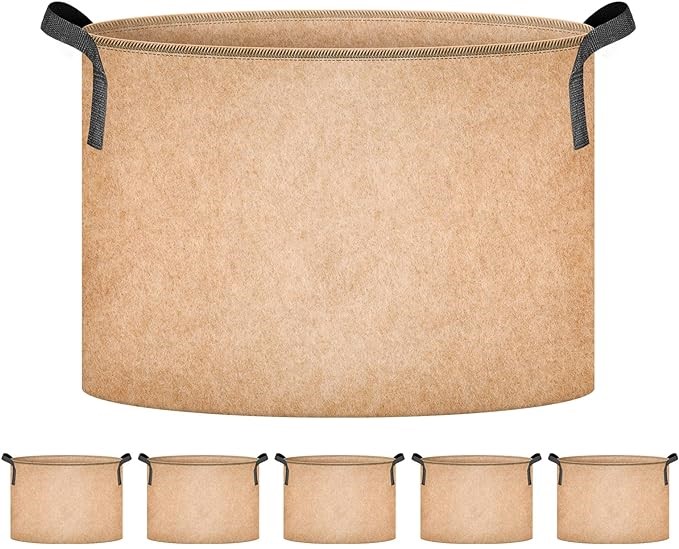
The handles of these grow bags are double thick and double stitched, making this a durable bag with sturdy handle straps allows moving easily and safely. This is the perfect gift for gardeners, and a space efficient alternative to traditional growing.
Top tips for using grow bags

- Select grow bags that are the right size for your plants - for shallow-rooted crops, such as onions or lettuce, smaller grow bags that are approximately 5 gallons are suitable. However, for deep-rooted plants like carrots and parsnips, a taller grow bag is ideal. For those looking to grow potatoes, a larger grow bag is recommended so that the mounding-up process is effective. Grow bags that are approximately 10 gallons in size are recommended.
- Use a good quality potting mix - always fill grow bags with a high-quality, well-draining potting mix. Drainage in the soil is important, but the permeable liner will cause the grow bag to drain relatively quickly. Combining a small amount of coco-coir, such as this from Walmart, with your potting mix can help with moisture retention, reducing watering duties in the summer months.
- Positioning - place your grow bags in an area with adequate sunlight in a sheltered spot in your backyard. Most crops require a good amount of sunlight hours to help them grow. Tomatoes, for example, need plenty of sunlight for a good crop of fruits. Use grow bags with handles, as this will help you to move and rotate crops if necessary.
- Staking and support - certain crops that grow tall or possess a vining habit may require staking or training along a trellis. Install supports at the time of planting, using canes, for example, or if you are looking for more of a project, why not try and build hazel plant supports? As your plant grows, use garden twine to tie in. This preventative strategy will ensure that strong winds do not damage your crops.
Reusing grow bags
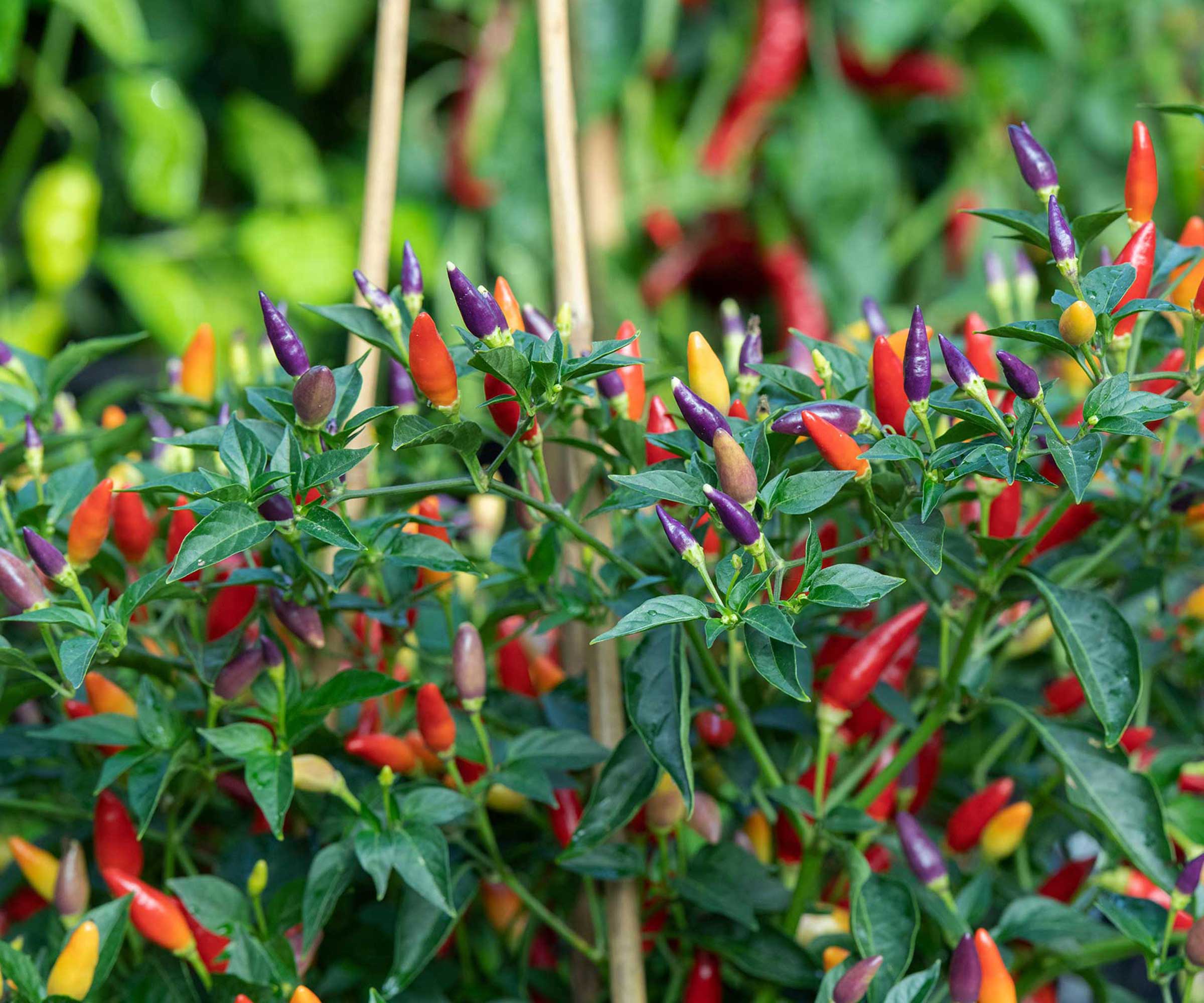
The ability to reuse grow bags is one reason they are so economical and are considered a sustainable growing method. At the end of the growing season, in late summer or fall, remove your plants and dispose of them on the compost heap.
Spent compost is useful and one practical flower bed idea is to redistribute this soil in your borders, helping to improve the quality and nutrition of your soil. Take the time to clean and dry your grow bags, storing them indoors for the winter. Helpfully, many grow bags will flatten, meaning they are easy to store.
While grow bags will not last as long as traditional terracotta flowerpots, annual cleaning, drying and storing will help to extend the lifespan of your grow bags, so it is worth taking the time and effort to follow this process.
FAQs
Which crops are best for grow bags?
Grow bags are suitable for a variety of crops, including tomatoes, peppers, cucumbers, lettuce, carrots and radishes. In addition, flowers that are intended for cutting, such as zinnias or snapdragons can be cultivated in grow bags.
Using grow bags in the backyard is a space-saving and effective way of cultivating fruit, veg and flowers. Growing in this way allows gardeners to grow their food, and with little effort, you will be harvesting delicious tomatoes and strawberries this summer.
If you are looking for unusual crops to try and grow this year, why not learn how to grow ginger in pots, for a delicious crop of this spicy root vegetable in your yard.
Sign up to the Homes & Gardens newsletter
Design expertise in your inbox – from inspiring decorating ideas and beautiful celebrity homes to practical gardening advice and shopping round-ups.

Thomas is a Content Editor within the Gardens Team at Homes and Gardens. He has worked as a professional gardener for both public spaces and private estates, specializing in productive gardening, growing food and flowers. Trained in Horticulture at the Garden Museum, he has written on gardening and garden history for various publications, including The English Garden, Gardens Illustrated, Hortus, The London Gardener and Bloom. He has co-authored a Lonely Planet travel book, The Tree Atlas, due out in 2024.
-
 How to clean a terrazzo floor in 5 steps – expert tips to scrub, shine, and seal this sparkling floor finish
How to clean a terrazzo floor in 5 steps – expert tips to scrub, shine, and seal this sparkling floor finishAvoid damage and protect it's shine with these expert tricks
By Chiana Dickson Published
-
 The 11 British interior design styles you are going to want to bring into your home – no matter which side of the pond you live on
The 11 British interior design styles you are going to want to bring into your home – no matter which side of the pond you live onInterior designers share their favorite British design trends and how to recreate them in your own home
By Pippa Blenkinsop Published
